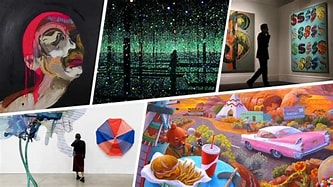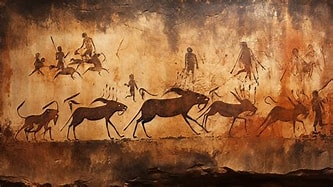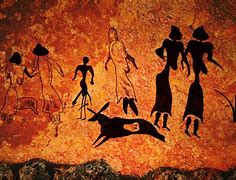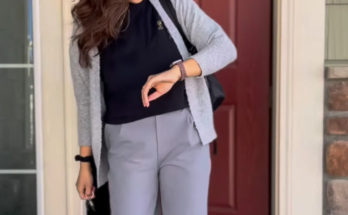Introduction
Art is a reflection of humanity, capturing our thoughts, feelings, and experiences throughout history. From the earliest cave paintings to the vibrant expressions of contemporary art, the evolution of art mirrors our development as a society. Have you ever wondered how we transitioned from simple drawings on cave walls to the complex installations we see in galleries today? This journey is not just about aesthetics; it’s a fascinating exploration of culture, technology, and human expression.
In this article, we’ll take a deep dive into the evolution of art, exploring its various forms and movements. Buckle up—it’s going to be an exciting ride through time!

The Dawn of Art: Cave Paintings
The First Brushstrokes
Cave paintings date back to around 40,000 years ago and are some of the earliest known forms of human expression. Found in locations like Lascaux in France and Altamira in Spain, these paintings often depict animals and hunting scenes. But why did our ancestors create these images?
Theories Behind Cave Art
- Spiritual Significance: Some researchers believe these artworks were part of religious or spiritual rituals.
- Communication: Others suggest they served as a means to communicate or share knowledge about hunting.
- Art for Art’s Sake: Perhaps they simply enjoyed creating beautiful images.
The Techniques Used
Cave artists utilized natural pigments made from minerals and charcoal. They applied these colors using their fingers, brushes made from animal hair, or even primitive spray techniques. The level of detail and artistry in these works showcases early humans’ creativity and skill.

The Rise of Civilizations: Ancient Art
Art in Ancient Egypt
As civilizations developed, so did art. Ancient Egypt gave us monumental architecture like the pyramids and intricate hieroglyphics. These artworks were deeply intertwined with religion and the afterlife.
Symbolism in Egyptian Art
Egyptian art is rich with symbolism. For instance, the ankh symbolized life, while the scarab beetle represented rebirth. Artists adhered to strict conventions that ensured their works conveyed specific meanings.
Greek and Roman Contributions
The Greeks and Romans further advanced artistic techniques, emphasizing realism and human emotion. Greek sculptures like the Venus de Milo exemplify idealized beauty, while Roman art often celebrated individualism through portraiture.
The Birth of Perspective
The introduction of linear perspective during the Renaissance marked a significant shift in art. Artists began to create depth and dimension in their works, leading to more lifelike representations.
The Middle Ages: Religious Focus
Gothic Art and Architecture
During the Middle Ages, art became heavily influenced by religion. Gothic cathedrals with their soaring spires and stained glass windows aimed to inspire awe and reflect divine beauty.
Illuminated Manuscripts
Monks painstakingly created illuminated manuscripts, combining text with intricate illustrations. These works were not only religious texts but also masterpieces of artistry.

The Renaissance: A Rebirth of Humanism
Rediscovering Classical Ideas
The Renaissance was a period of renewed interest in classical antiquity. Artists like Leonardo da Vinci and Michelangelo pushed boundaries with their innovative techniques.
Techniques That Changed Everything
- Chiaroscuro: This technique uses strong contrasts between light and dark to create volume.
- Sfumato: A method that allows colors to blend seamlessly, giving a smoky effect.
The Impact of Patronage
We can’t discuss the Renaissance without mentioning patronage. Wealthy families like the Medici funded artists, allowing them to focus on their craft without financial worries.
Baroque to Romanticism: Emotion Takes Center Stage
The Drama of Baroque Art
The Baroque period is characterized by dramatic use of light and shadow, intense emotional expression, and grandeur. Artists like Caravaggio brought stories to life with their dynamic compositions.
Romanticism’s Emphasis on Emotion
In contrast to the rationality of the Enlightenment, Romantic artists celebrated emotion and nature. Think of Caspar David Friedrich’s haunting landscapes that evoke feelings of solitude and introspection.
Modern Art Movements: Breaking Boundaries
Impressionism Shakes Things Up
In the late 19th century, Impressionism emerged as artists like Claude Monet sought to capture fleeting moments rather than detailed realism. This movement challenged traditional notions of art.
Techniques That Defined Impressionism
Impressionists used loose brushwork and vibrant colors to depict light’s changing qualities—perfect for capturing those magical moments!
The Rise of Abstract Art
As we moved into the 20th century, artists began exploring abstraction. Movements like Cubism (led by Picasso) broke down objects into geometric shapes, challenging viewers’ perceptions.
Contemporary Art: A Diverse Landscape
Postmodernism and Its Many Faces
Contemporary art is incredibly diverse, encompassing various styles and mediums—from installation art to digital creations. Postmodernism questions traditional narratives and often incorporates irony or playfulness.
Notable Contemporary Artists
- Banksy – Known for his provocative street art.
- Yayoi Kusama – Famous for her immersive installations featuring polka dots.
- Ai Weiwei – An activist artist whose work addresses social issues.
Technology’s Influence on Art Today
Today’s artists leverage technology in ways never before imagined—think virtual reality installations or digital art forms that challenge our understanding of creativity.
Conclusion
The evolution of art is a testament to human creativity and adaptability. From cave paintings that tell stories of survival to contemporary pieces that provoke thought about society, each era reflects our changing values, beliefs, and technologies. As we look ahead, one thing is certain—art will continue to evolve alongside us, pushing boundaries and inspiring future generations.
FAQs About the Evolution of Art
1: What are cave paintings made from?
Cave paintings are typically made using natural pigments derived from minerals mixed with animal fat or water applied with fingers or primitive brushes.
How did ancient civilizations influence modern art?
Ancient civilizations laid the groundwork for artistic techniques such as perspective and realism that are still used today in various forms.
What defines contemporary art?
Contemporary art encompasses a wide range of styles and mediums created in recent decades, often reflecting current social issues or using new technologies.
How has technology changed art?
Technology has introduced new mediums such as digital art and virtual reality installations, allowing artists to explore creativity in innovative ways.
Why is art important for society?
Art serves as a reflection of culture, promotes emotional expression, fosters community engagement, and can challenge societal norms or provoke critical thought.


